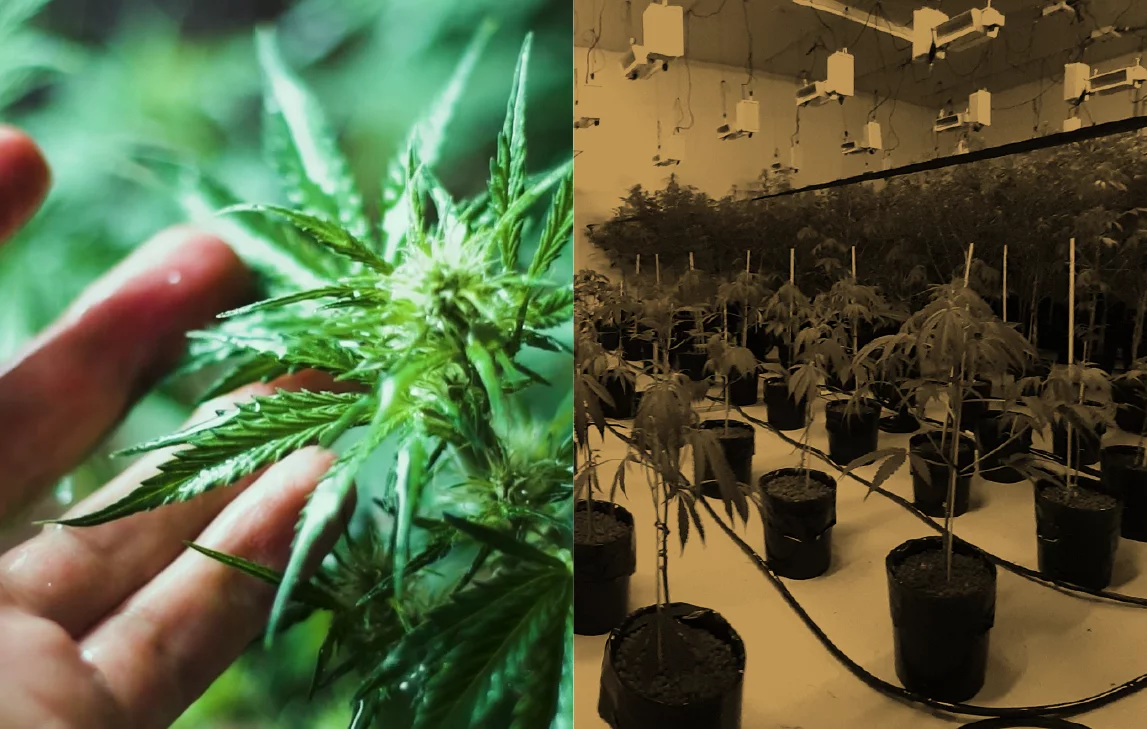 Hemp is among the oldest cultivated crops on the planet. In Colonial America, farmers were growing hemp for paper, lamp fuels, and ropes. Then in 1937, the US Congress passed the Marihuana Tax Act. This Act heavily taxed all cannabis sales, including hemp, making it less economically viable to produce, import, and export. It wasn’t until 2018 that Congress removed hemp along with its seeds and derivatives from the Controlled Substances Act. Once Congress removed the restrictions, farmers acted to produce hemp crops. With the explosion of the popularity of CBD products, farmers have struggled to keep up with the demand. Cultivators sought new ways to increase indoor hemp yield to increase the production of CBD.
Hemp is among the oldest cultivated crops on the planet. In Colonial America, farmers were growing hemp for paper, lamp fuels, and ropes. Then in 1937, the US Congress passed the Marihuana Tax Act. This Act heavily taxed all cannabis sales, including hemp, making it less economically viable to produce, import, and export. It wasn’t until 2018 that Congress removed hemp along with its seeds and derivatives from the Controlled Substances Act. Once Congress removed the restrictions, farmers acted to produce hemp crops. With the explosion of the popularity of CBD products, farmers have struggled to keep up with the demand. Cultivators sought new ways to increase indoor hemp yield to increase the production of CBD.
Indoor and Outdoor Cultivation
When most of us think of growing a crop, we tend to think of a farm. And traditionally, farmers have grown hemp outdoors. However, with modern technology, many plants, including hemp, grow well indoors. When comparing indoor and outdoor cultivation, realize there are benefits and drawbacks to both.
Pros and Cons of Both Indoor and Outdoor Horticulture
Indeed, the outdoor cultivation of hemp is the most economical option. Plus, without the constraints of building size, cultivators can grow more hemp at one time outdoors. On the downside, bugs, rodents, and even birds can attack hemp. Outdoor farming invites the use of pesticides, which will show up in your final product. And depending on the extraction and refinement process, pesticides become concentrated at high levels rendering it unsuitable for human consumption.
Additionally, the soil quality, temperature, and rain can impact both the crop yield and the production of CBD. Moreover, hemp plants absorb any heavy metals and toxins present in the soil. These contaminants can be present in extracted CBD, counteracting any significant benefits expected from the product. Finally, there is only one growing season for outside cultivation, leaving you with only one harvest.
While indoor cultivation may be more expensive, it can lead to higher hemp yield due to controlled conditions. Cultivators can control lighting, temperature, and humidity, leading to harvesting more of the product. Also, farmers can grow hemp year-round because indoor growing conditions are constant.
One way to Increase Indoor Hemp Yield
When growing hemp indoors, cultivators can use light deprivation to increase yield. Generally, cultivators bombard hemp with light during its vegetative growth. Controlling light causes them to grow at very rapid rates, as much as 2 inches per day. Furthermore, depriving the plant of light will cause it to flower early. The flowers of the hemp plant are rich in CBD. Therefore, controlling the light during the growing season is an effective way to increase the production of CBD to meet growing demand.
And Just What are CBD Products?
There is much misinformation about CBD products. Hemp belongs to the same plant species, Cannabis Sativa, as marijuana. This family of plants has naturally-occurring compounds called cannabinoids. Cannabidiol or CBD is the compound manufacturers extract from the hemp plant. It produces no psychoactivity, unlike the cannabinoid, THC, found in high percentages in marijuana.
There has been an explosion of popularity of CBD products recently. As consumers discover the benefits of CBD, the demand will only get higher. The goal for many growers is to focus on increasing the indoor hemp yield each season. Many farmers have moved from growing other crops to growing hemp.
 Hemp is among the oldest cultivated crops on the planet. In Colonial America, farmers were growing hemp for paper, lamp fuels, and ropes. Then in 1937, the US Congress passed the Marihuana Tax Act. This Act heavily taxed all cannabis sales, including hemp, making it less economically viable to produce, import, and export. It wasn’t until 2018 that Congress removed hemp along with its seeds and derivatives from the Controlled Substances Act. Once Congress removed the restrictions, farmers acted to produce hemp crops. With the explosion of the popularity of CBD products, farmers have struggled to keep up with the demand. Cultivators sought new ways to increase indoor hemp yield to increase the production of CBD.
Hemp is among the oldest cultivated crops on the planet. In Colonial America, farmers were growing hemp for paper, lamp fuels, and ropes. Then in 1937, the US Congress passed the Marihuana Tax Act. This Act heavily taxed all cannabis sales, including hemp, making it less economically viable to produce, import, and export. It wasn’t until 2018 that Congress removed hemp along with its seeds and derivatives from the Controlled Substances Act. Once Congress removed the restrictions, farmers acted to produce hemp crops. With the explosion of the popularity of CBD products, farmers have struggled to keep up with the demand. Cultivators sought new ways to increase indoor hemp yield to increase the production of CBD.